Growing laurel noble
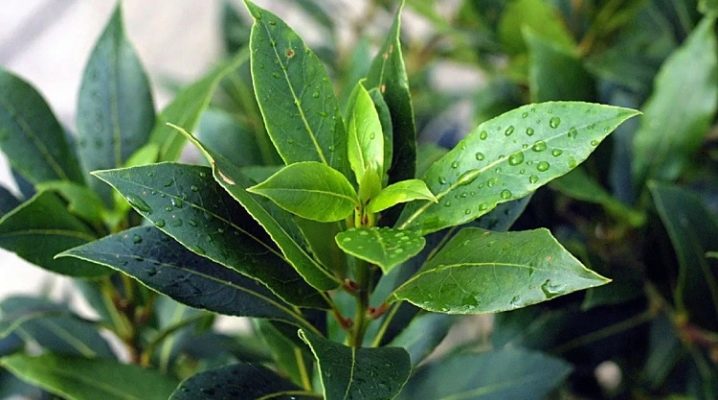
In the green collections of breeders who are not indifferent to the exotic, one can often find such an interesting culture as the noble laurel. According to lovers of unusual home plants, laurel, despite its subtropical origin, feels quite comfortable in an apartment environment. In the article, we will consider what features this plant has, how to plant and how to grow it at home.
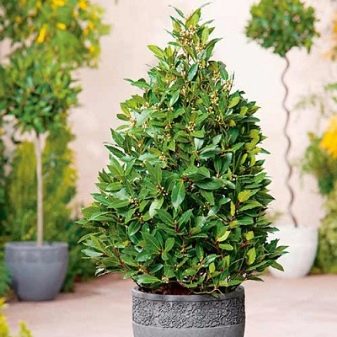
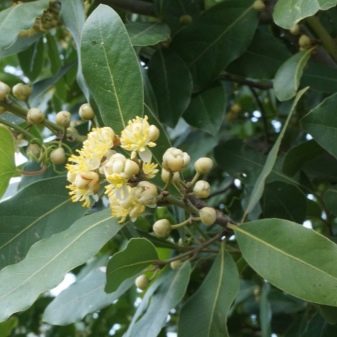
Description
Laurel noble, or nobilis (from the Latin name of the plant Laurus nobilis), is a type of evergreen trees or shrubs that are members of the Laurel family. Depending on the life form (tree or bush) and growing conditions, the height of the plants can vary from 1.5 to 15 meters. The trunk or stems of the plant are covered with a brown-brown shiny bark. Branches and young shoots may be lighter than the main trunks and have a paler grayish brown or reddish brown coloration.
The leaves of the noble laurel are rich green, glossy, elliptical or lanceolate, have a pronounced spicy smell. Homemade laurel leaves can be used as an aromatic additive in food preparation, for homemade preparations, pickles and pickles. The plant enters the flowering phase in spring. At this time of the year, small "umbrellas" are formed in the axils of its leaves, consisting of small pale yellow flowers. In the middle to late autumn, fruits are formed. Laurel fruits are small ovoid drupes of black color with a bluish tinge. All parts of the plant contain resins and essential oil, which give the laurel its familiar bright aroma.
Nobilis has a very attractive, compact cone-shaped crown. So that the indoor laurel does not grow too much and does not lose its decorative effect, plant breeders periodically subject it to formative pruning. The formation of the crown is relatively easy for laurel, so it can also be grown as a standard plant. For growing laurel at home, large pots, flowerpots and tubs are used.
Plant breeders highly appreciate this exotic plant not only for its attractive appearance, but also for its unpretentiousness, drought and cold resistance.
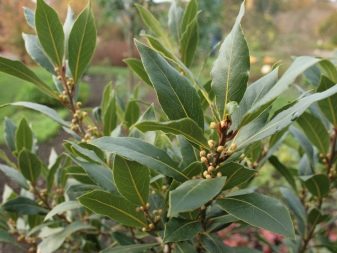
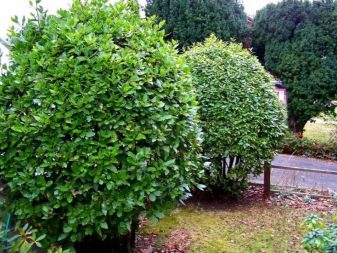
Varieties
In indoor plant growing, varietal noble laurels are most often used. They are characterized by slow growth with the gradual formation of a compact and lush crown. Such plants can be grown both in the apartment, and on the balcony, and on the site in the open field.
- Little Ragu - a highly decorative variety, suitable for growing at home. The plant is medium-sized, slow-growing, has a dense spherical crown, easily pruned. The leaves are deep green, lanceolate. Shoots - thin, directed upward, reddish-brown color.
- "Undulata" (Undulata) - a variety suitable for growing both indoors and outdoors. The leaves are shiny, bright green, with corrugated edges, have a pronounced laurel aroma.
- Angustifolia - a very interesting variety, notable for its very narrow, long leaves. Unpretentious, drought-resistant. It lends itself well to formation.
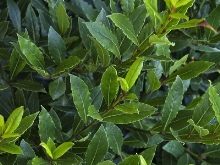
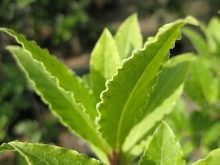
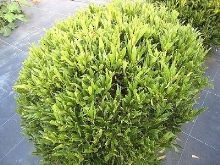
Landing
Experienced plant breeders argue that growing laurel from seeds is the least reliable and most labor-intensive way of breeding the young generation of plants. For sowing, only fresh, fully ripe seeds that do not show signs of rotting, mold and damage are suitable. Seeds are germinated in containers with a loose fertile soil mixture (it is allowed to use ready-made soil for seedlings and flowers), installed in a sunny place. Laurel seeds germinate for a very long time - from 6-8 months to 1 year. The optimum temperature for germinating seeds is + 20 ... 23 ° C.
The planting of rooted cuttings and laurel seedlings is carried out in tubs, flowerpots or deep, spacious pots. The plant is placed in a container by the transfer method, being careful not to damage the clod of earth on the roots. Previously, a layer of drainage (crushed stone, expanded clay, pebbles) is laid on the bottom of the pot or tub, and peat soil is covered with a small addition of sod land. After planting, the plant is watered abundantly and for 2-3 days they provide it with protection from the bright sun and temperature changes. The fulfillment of these conditions is necessary for a faster and easier adaptation of the plant.
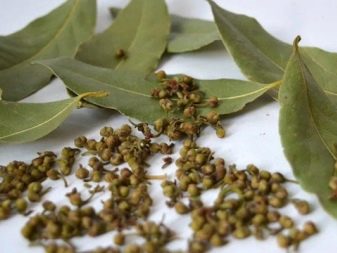
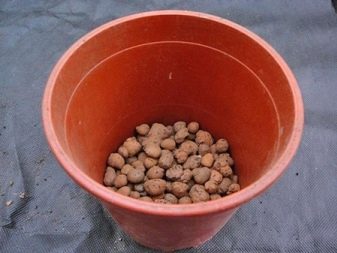
Care
Despite the fact that the noble laurel is considered a very unassuming culture, its subtropical origin still requires a number of specific care recommendations. Below are the main ones.
Lighting
Laurel does not tolerate long-term light deficiency, in which its leaves begin to fade and shrink. Experienced plant breeders recommend placing containers with plants in well-lit places (it is worth noting that nobilis easily tolerates short-term exposure to direct sunlight).
At the same time, the plant should be protected from the scorching sun - otherwise, burns may form on its leaves.
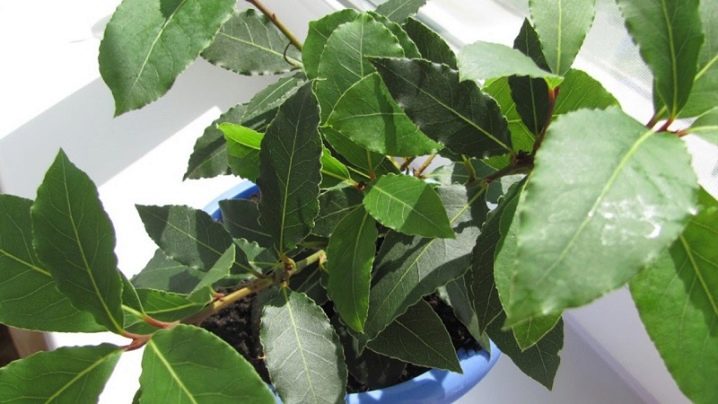
Watering
The subtropical origin of laurel determines its increased need for regular and abundant watering. During the growing season (spring-summer) and before the onset of the dormant phase (autumn), the plant is recommended to be watered as the soil surface in the pot dries up. For irrigation, use only settled (not tap!) Water at room temperature. When watering with cold or not settled water, the laurel can get sick, shed its leaves and lose its decorative effect.
In autumn, the frequency of watering is reduced, and in winter it is completely reduced to a minimum while the plant is in the dormant stage. However, even in the cold season, laurel should be watered periodically to prevent its roots from drying out.
Top dressing
Experienced plant breeders recommend starting feeding laurel even before the beginning of the growing season - in late winter or early spring. Young plants are fed once every 2-3 weeks. It is advisable to feed adult specimens less often (up to 1 time per month) so as not to stimulate the active growth of excess green mass and shoots. For top dressing, ready-made complex fertilizers containing all the necessary micro- and macroelements are optimal.
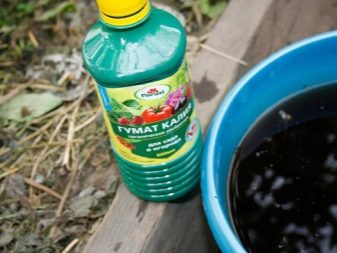

Pruning
Laurel noble relatively calmly and painlessly tolerates pruning, which makes it easy to give its crown a variety of original shapes - cone-shaped, pyramidal, spherical. Many breeders often subject it to a spectacular topiary haircut. During the formation of the crown, the ends of the buds of the plant are pinched and the most overgrown branches are shortened to the required length (it is important to ensure that several buds and at least 2 pairs of leaves remain on the shortened branches after pruning). As a result of this procedure, the branches of the plant quickly begin to bush, overgrowing with new side shoots.
It should be noted that experienced gardeners strongly discourage pruning very young plants (under the age of 2 years), as this may negatively affect their further development. In the case of a very strong pruning of the laurel with the maximum shortening of its branches, the young plant may even die. It is recommended to prune laurel noble with the onset of the dormant phase, when the plant slows down and then almost completely stops its development. This phase usually occurs in September-October.
At the beginning of the growing season (in spring), when the plant wakes up and starts to grow actively, pruning cannot be carried out. Violation of the sap flow processes caused by damage to the branches, in this case, can lead to the death of laurel. Throughout the growing season, it is allowed to carry out periodic sanitary pruning of the plant. In the process of such procedures, using sharp scissors or a garden pruner, dry, old or damaged branches and leaves, as well as parts of the plant that have signs of disease, are removed.

Diseases and pests
Excessive watering, causing waterlogging of the soil, keeping laurel in a damp and cool room - these factors often cause the development of putrefactive diseases (root, brown and other types of rot). The causative agents of these diseases are pathogenic fungi, for the control of which fungicidal preparations are used ("Fitosporin", "Topaz M", "Trichoflor"). Typical signs of rot development are gray, off-white and black spots on leaves and shoots. In addition, such spots can cover the trunk of the plant at the base, which indicates the defeat of the root system by the fungus. During the period of treatment with fungicides, watering is temporarily stopped, and the plant itself is placed in a dry room with soft, diffused light. And they also carry out a complete replacement of the soil substrate and directly the container in which the infected plant was located.
When growing laurel at home, plant breeders rarely encounter the defeat of this exotic crop by pests. However, in some cases, for example, when a container with laurel is temporarily transferred to the street, this exot can become a victim of a scale insect. The pest visually resembles a pale gray or light yellow larva, protected by a hard round shield case. Shoots of plants affected by colonies of scale insects appear covered with warts or strange waxy growths. The scale insects feed on the cell sap of plants, which over time (in the absence of any measures to destroy the parasite) leads to the death of the affected culture. To destroy the parasite, insecticides are used: "Aktara" or "Aktellik". In cases where the plant has had time to be badly damaged by the pest, the affected parts should be cut off and burned.
Folk methods also help well in the fight against the scabbard. One of them involves the treatment of the affected laurel (stem, branches and leaves) with ordinary vodka. For processing, use a cotton pad or swab, which is pre-moistened in vodka and gently wipe all parts of the plant with it.
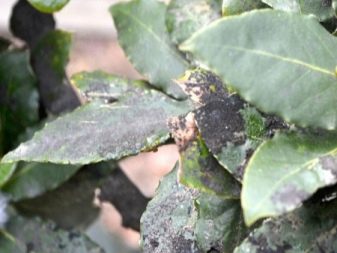
































The comment was sent successfully.